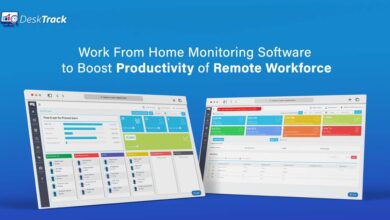In the rapidly evolving landscape of blockchain technology, one aspect stands out as particularly critical: the development of blockchain wallets. These digital wallets play a pivotal role in the adoption and utilization of cryptocurrencies and other digital assets. Whether you’re a novice exploring the world of blockchain or an experienced developer looking to enhance your skills, understanding the intricacies of blockchain wallet development is essential. In this comprehensive guide, we’ll delve into the fundamentals of blockchain wallet development, exploring key concepts, best practices, and practical tips to help you navigate this dynamic field with confidence.
Understanding Blockchain Wallet Development
At its core, blockchain wallet development involves creating software applications that allow users to store, manage, and interact with cryptocurrencies and digital assets securely. Unlike traditional wallets, which hold physical cash and cards, blockchain wallets operate on decentralized networks and utilize cryptographic techniques to secure transactions and assets. These wallets come in various forms, including desktop, mobile, hardware, and web-based solutions, each offering unique features and benefits.
Key Components of Blockchain Wallets
Before diving into the development process, it’s essential to understand the key components that comprise a blockchain wallet:
- Private and Public Keys: At the heart of every blockchain wallet are the private and public keys. The private key serves as the user’s digital signature, allowing them to access and control their funds. The public key, on the other hand, acts as the wallet’s address, enabling other users to send funds to the wallet.
- Wallet Address: The wallet address, also known as the public key hash, is a unique identifier generated from the public key. It serves as the destination for incoming transactions and is used to verify ownership of the wallet.
- Blockchain Network Integration: Blockchain wallets interact with specific blockchain networks, such as Bitcoin, Ethereum, or others. Integration with these networks allows users to send and receive transactions, view account balances, and interact with smart contracts and decentralized applications (DApps).
- User Interface (UI) and User Experience (UX): A well-designed user interface is essential for a seamless user experience. Intuitive navigation, clear transaction history, and robust security features are hallmarks of an effective blockchain wallet UI/UX design.
- Security Features: Security is paramount in blockchain wallet development. Advanced encryption techniques, multi-factor authentication, and cold storage solutions are some of the security features implemented to safeguard users’ funds and sensitive information.
Best Practices for Blockchain Wallet Development
When embarking on blockchain wallet development, adhering to best practices is crucial to ensuring the security, functionality, and usability of the wallet. Here are some essential best practices to consider:
- Conduct Thorough Security Audits: Security vulnerabilities can expose users’ funds to risks such as hacking and theft. Conducting comprehensive security audits and implementing robust security measures can mitigate these risks and enhance user confidence.
- Embrace Open Standards: Interoperability is key in the blockchain ecosystem. Embracing open standards and protocols allows for seamless integration with various blockchain networks and improves the wallet’s compatibility with other applications and services.
- Prioritize Usability: Blockchain wallets should be accessible and easy to use for users of all levels of technical expertise. Prioritizing usability through intuitive design, clear instructions, and user-friendly features can enhance adoption and retention rates.
- Implement Multi-Platform Support: Users expect flexibility and convenience when it comes to accessing their digital assets. Implementing multi-platform support across desktop, mobile, and web-based environments ensures that users can manage their funds anytime, anywhere.
- Stay Updated with Regulatory Compliance: As the regulatory landscape evolves, staying compliant with relevant regulations and guidelines is essential. Keeping abreast of regulatory developments and implementing compliance measures can help avoid legal issues and ensure the longevity of the wallet platform.
Practical Tips for Blockchain Wallet Development
In addition to best practices, here are some practical tips to enhance your blockchain wallet development process:
- Start with a Solid Foundation: Begin by selecting a robust blockchain platform or framework that aligns with your project requirements and objectives. Consider factors such as scalability, security, and community support when choosing a platform.
- Leverage Existing Libraries and Tools: Building a blockchain wallet from scratch can be time-consuming and resource-intensive. Leverage existing libraries, SDKs (Software Development Kits), and development tools to expedite the development process and reduce overhead costs.
- Focus on Security: Security should be a top priority throughout the development lifecycle. Implement industry-standard encryption techniques, employ secure coding practices, and regularly audit and update your wallet’s security measures to protect users’ funds and data.
- Test Rigorously: Thorough testing is essential to identify and address any bugs, vulnerabilities, or usability issues in the wallet application. Conduct comprehensive unit tests, integration tests, and user acceptance tests to ensure the reliability and functionality of the wallet across various scenarios and use cases.
- Gather User Feedback: Soliciting feedback from real users throughout the development process can provide valuable insights into usability, feature preferences, and overall satisfaction. Incorporate user feedback iteratively to refine and improve the wallet’s design and functionality.Emerging Trends in Blockchain Wallet Development:
- DeFi Integration: Integrating decentralized finance (DeFi) protocols directly into blockchain wallets enables users to access a wide range of financial services, including lending, borrowing, and trading, without relying on centralized intermediaries.
- NFT Support: Non-fungible tokens (NFTs) have gained popularity as a means of representing ownership of digital assets such as art, collectibles, and virtual real estate. Wallets that support NFTs enable users to securely store, manage, and trade these unique digital assets.
- Multisig Wallets: Multisignature (multisig) wallets require multiple signatures from different parties to authorize transactions, providing an additional layer of security and accountability. Integrating multisig functionality into blockchain wallets enhances security and mitigates the risk of single points of failure.
- Cross-Platform Integration: With the increasing convergence of blockchain technology and traditional finance, wallets that support seamless integration with fiat currencies, payment gateways, and traditional banking systems are gaining traction. Cross-platform integration enables users to transition seamlessly between blockchain and traditional financial services.
Conclusion
Blockchain wallet development is a multifaceted endeavor that requires a deep understanding of blockchain technology, security principles, and user experience design. By following best practices, leveraging practical tips, and prioritizing user-centric design, developers can create robust and user-friendly blockchain wallets that empower users to.



